January 31, 2023 dialog
This article has been reviewed according to Science X's editorial process and policies. Editors have highlighted the following attributes while ensuring the content's credibility:
fact-checked
peer-reviewed publication
trusted source
written by researcher(s)
proofread
New semiconducting borophene paves the way for the lightest high-performance transistor
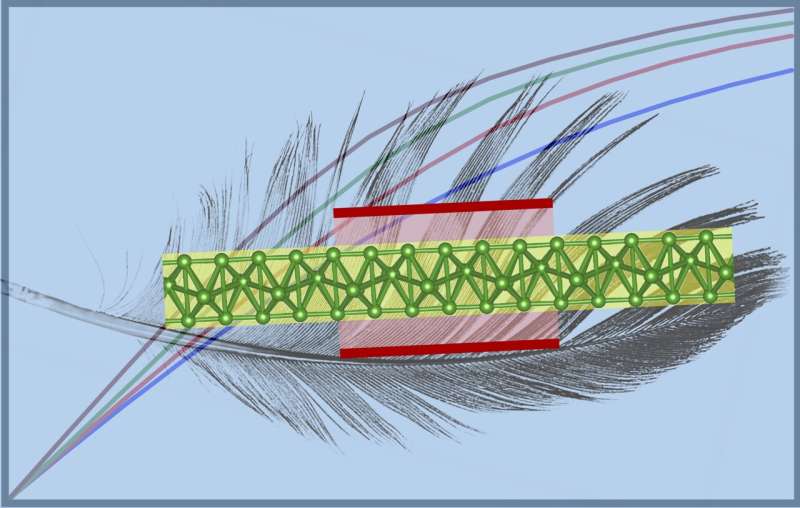
In the year 1808, French chemists Joseph-Louis Gay-Lussac and Louis-Jacques Thenard, and independently, English chemist Humphry Davy, discovered the fifth element of the periodic table—boron. In crystalline form, boron primarily possesses three polymorphs, i.e., three distinct unit cell configurations: α-rhombohedral, β-rhombohedral, and β-tetragonal, among 16 possible bulk allotropes.
The unique properties of this element have resulted in its use in numerous applications, including chemistry, materials science, life sciences, energy research and electronics. Moreover, based on studies conducted over the past decade, boron has significant potential for use in pharmaceutical drug design as it plays an essential role in bone growth and maintenance, wound healing, prevention of vitamin-D deficiency and other processes.
In the periodic table of elements, boron lies to the left of carbon, which causes boron to have similar valence orbitals but a shorter covalent radius. In contrast to carbon, which favors a 2D (two-dimensional) layered structure (aka graphite) in its bulk form, the bulk allotropes of boron are composed of B12 icosahedral cages. As a result, it was challenging to experimentally realize a 2D atomic network of boron, also known as borophene, until 2015.
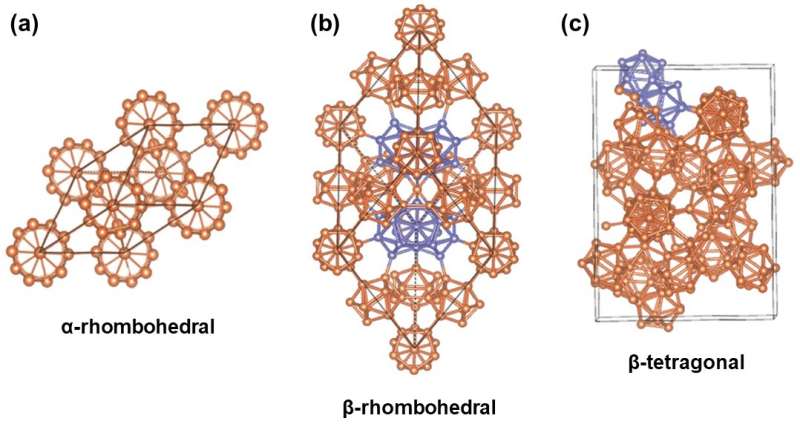
Initially, one of the underlying reasons for limited experimental investigations of 2D boron sheets was the use of costly and toxic precursors, e.g., diborane. Later, atomically thin borophene sheets were grown under ultrahigh-vacuum conditions using a solid boron atomic source of 99.9999% purity to circumvent the difficulties caused by poisonous precursors.
Recently, borophene has drawn tremendous attention for its ultralow molar mass. Unlike graphene, borophene comes with different polymorphs, such as striped, β12, X3, and honeycomb, and until now, all of them turned out to be metallic. However, bulk boron is semiconducting. Naturally, researchers want to explore the semiconducting 2D phase of boron.
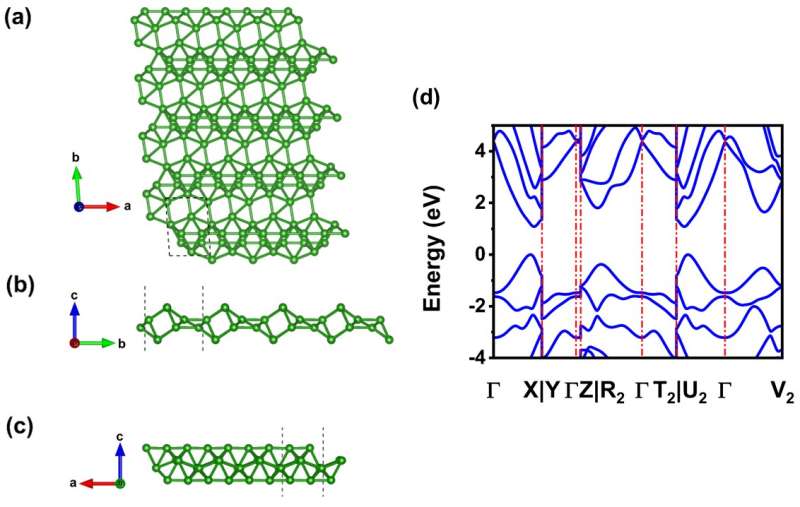
Semiconductors play a crucial role in the design of transistors and integrated circuits built with them. The use of silicon as a base semiconducting material in a transistor has revolutionized the electronics industry. With time, downscaling of transistor size has enabled engineers to pack millions of transistors in a unit area of silicon wafer.
However, researchers predict that the downscaling of silicon technology will reach its bottleneck within the next few years. Therefore, the semiconductor industry needs to explore 2D materials as an alternative to silicon, as researchers declare that 2D materials may provide optimum electrostatic integrity for transistors.
After the discovery of graphene in 2004, a dozen 2D semiconductors (e.g., germanane, tellurene, phosphorene, etc.) have been investigated experimentally for transistor channel application. However, exploring 2D materials experimentally from their infinite space is unfeasible. Therefore, with the advancement in computational science and technology, the discovery of the relevant transistor material from the enormous 2D material space is in demand.
So far, the reported semiconducting phases of borophene exhibit small bandgaps, which make them inappropriate as transistor channel material. In our work, we have discovered a hyper-coordinated 2D network of boron atoms named clustered-P1 borophene. It shows a bulk silicon-like band gap, yet lower and symmetric effective masses along the transport direction.
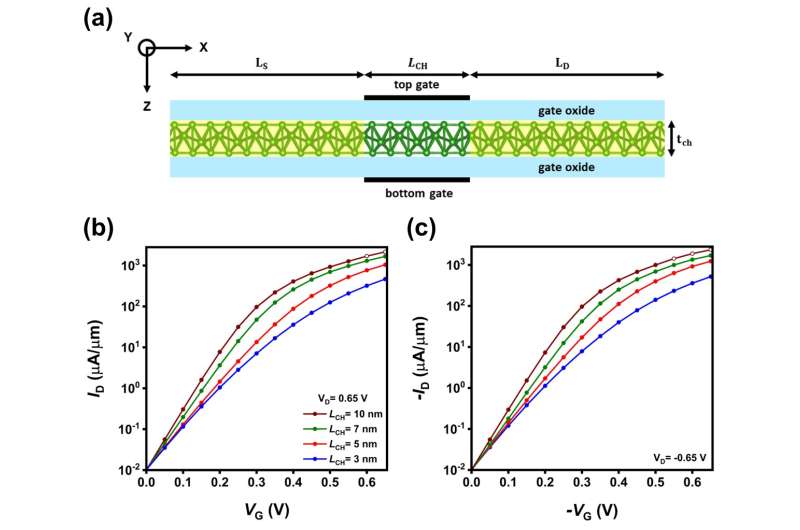
In our recent work, which is published in ACS Applied Materials and Interfaces ("Discovery of Clustered-P1 borophene and Its Application as the Lightest High-Performance Transistor"), we begin the study with a first-principles-based search of boron's 2D space, employing an evolutionary algorithm. It yields the exceptional semiconducting borophene phase, clustered-p1 borophene, that exhibits a total energy close to the global minimum of all borophene phases.
After that, we have predicted the performance characteristics of conventional MOSFETs (metal-oxide-semiconductor field-effect transistors) implemented with clustered-P1 borophene for 10-nm to 3-nm channel lengths. We have performed this work using an in-house, GPU-based, self-consistent quantum transport simulator. The performance of these MOSFETs has been found to meet the IRDS (international roadmap for devices and systems) requirements for several benchmark metrics.
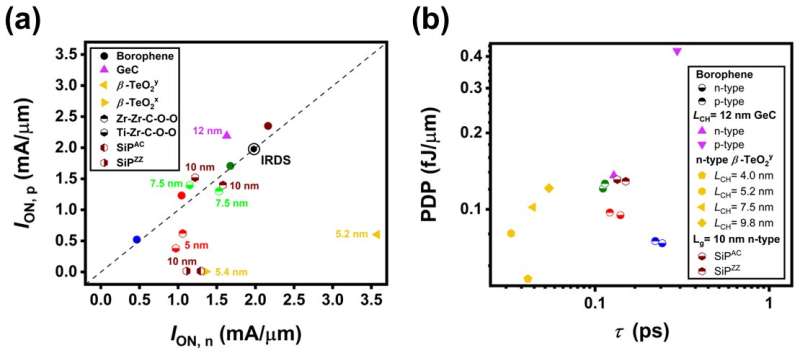
The clustered-p1 borophene shows remarkable thermodynamic, structural, and dynamic stability. As shown in our work, it is noteworthy that even a transistor of 3-nm channel length can deliver 104 ON-to-OFF current ratio. On the other hand, the balanced-mode operation of n- and p-type MOSFETs makes it suitable for CMOS (complementary metal-oxide semiconductor) circuit performance. Keeping these beneficial outcomes in mind, we have predicted that the clustered-P1 borophene MOSFET may lead to a good option for possibly the lightest high-performance transistor.
This story is part of Science X Dialog, where researchers can report findings from their published research articles. Visit this page for information about ScienceX Dialog and how to participate.
More information: Sirsha Guha et al, Discovery of Clustered-P1 Borophene and Its Application as the Lightest High-Performance Transistor, ACS Applied Materials & Interfaces (2023). DOI: 10.1021/acsami.2c20055
Journal information: ACS Applied Materials and Interfaces , Advanced Functional Materials
Sirsha Guha is a PhD student of the Indian Institute of Science (IISc) Bangalore. Arnab Kabiraj is a Research Associate of the Indian Institute of Science (IISc) Bangalore. Santanu Mahapatra is working as a Professor at the Indian Institute of Science (IISc) Bangalore. For more information see: santanu.dese.iisc.ac.in and nsdrl.dese.iisc.ac.in




















